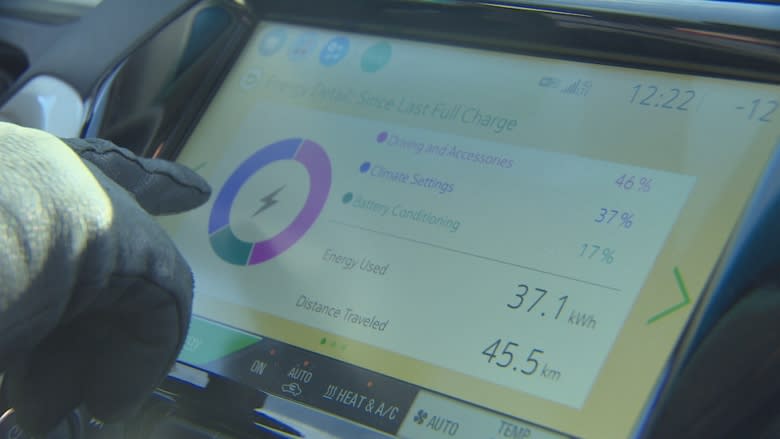How do electric cars start in the bitter cold? Shockingly well, experts say
It's a common Canadian winter experience. You turn the car's ignition key and the engine makes a sickly "whirr-whirr" sound, but does little else. It make sense that extreme cold is brutal on batteries, so what happens to electric cars?
It's an important question with another bitter cold snap settling over southern Ontario.
"Electric vehicles start like a charm in winter," said Cara Clairman, president and CEO of Plug'n Drive, a non-profit that seeks to answer consumer questions about electric vehicles (EVs).
"We don't hear any stories of EV owners having trouble starting up their cars in the winter."
That's because EVs use electricity from the grid to warm and condition the battery while charging overnight. And Clairman says EV owners can program their vehicles to warm the interior so that more battery power can be dedicated to moving the car.
Keeping it warm
"Most of us plug in at night so that plug is keeping the battery nice and conditioned. In the morning, I can turn my car on remotely to warm the interior of the car," she told CBC Toronto.
"It's so great you get into a warm car and you've used your plug electricity to do that and you don't waste your range."
But extreme cold does have one noticeable effect on EVs: a dramatic drop in range.
"What you do find is the range is less when it's bitterly cold. So in a -20 C or colder day you're going to find a drop in range by 40 per cent," said Clairman.
Keeping it running
That's because not only do batteries have lower performance in colder temperatures, the car must draw power to keep the battery warm and heat the cabin — that reduces the distance you can drive.
"But Ontarians don't drive all that far. We drive on average 30 to 50 km a day which any electric car on the market is going to do no matter how cold it is out," said Clairman.
And she says EV owners can extend their range by using the seat and steering wheel heaters instead of warming up the entire cabin.
Clairman points out both gasoline and electric vehicles become less fuel efficient at colder temperatures, cutting the distance they can travel using the energy they carry.
And this bitter cold has taken its toll on the driving public, says the Canadian Automobile Association.
Electric cars can handle Canadian winter
"December 27th was their busiest day for service calls in the last four years with 9,149 calls for service," said Nadia Mato of the CAA.
She says between Dec.19 to Jan. 3, the CAA received 87,017 calls for service in the area from Kingston to Windsor (excluding Niagara). A total of 35,241 calls were in the GTA.
Of that, battery calls alone accounted for 31,615 calls across the coverage area and 13,110 in the GTA, but none apparently were for EVs.
"You can't boost an electric battery. An electric vehicle needs to be charged, not boosted," Mato said. "If you have a hybrid vehicle we can boost the vehicle, otherwise full electric vehicles require charging and not a boost. While we can't boost them, we can tow the car to a charging station."
But the CAA doesn't specifically have a category for electric and electric hybrid vehicles, Mato says.




